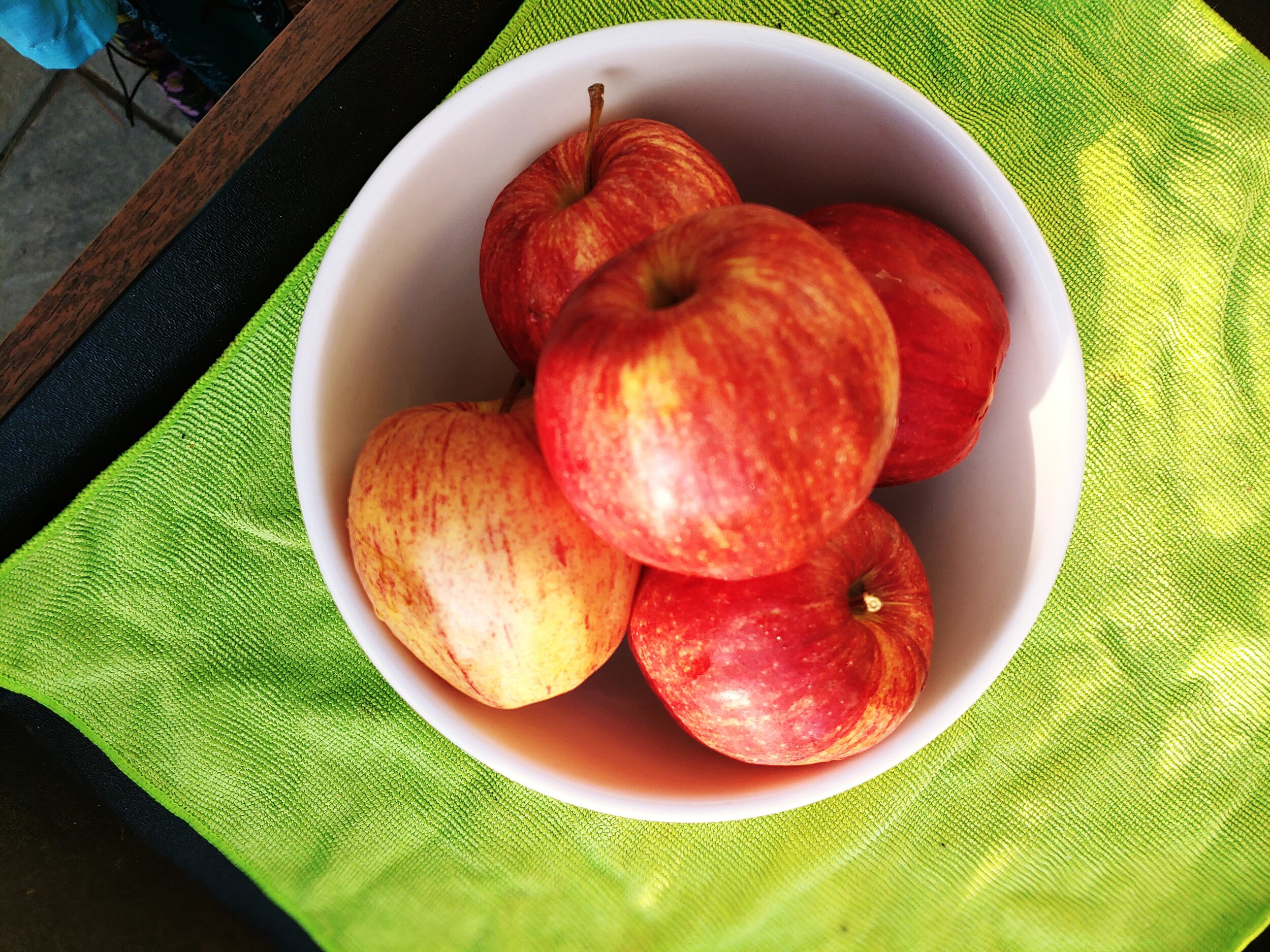September is the time to enjoy the crisp and refreshing taste of apples. This month, we lighten up traditional apple pie with a quick and easy skillet saute.
Skillet Apple Pie
Ingredients:
3 apples (about 3 cups, chopped). Honey crisp, Gala, McIntosh, Granny Smith or other variety.
1 Tbsp. butter (or coconut oil)
2 Tbsp. water 1 Tbsp. maple syrup
½ tsp ground cinnamon or Apple pie spice
⅛ tsp salt
1/4 c. granola
1/4 c vanilla yogurt or ice cream
Method:
Cut apples into pieces (about ½-1” cubes).
Heat skillet and add butter, allowing to melt.
Put apple pieces into a skillet with 2 Tbsp. water. Cover the pan and cook over medium heat for about 5 minutes, stirring occasionally, until the apples become slightly soft and water is absorbed.
Cook for another 5 minutes, stirring every minute or so, until the apples become soft.
Add maple syrup, cinnamon and salt. Stir until well mixed.
Cook for about 5 more minutes, stirring every minute until the apples reach your desired softness! Remove from heat and serve topped with vanilla yogurt or ice cream. Top with a sprinkle of granola.















